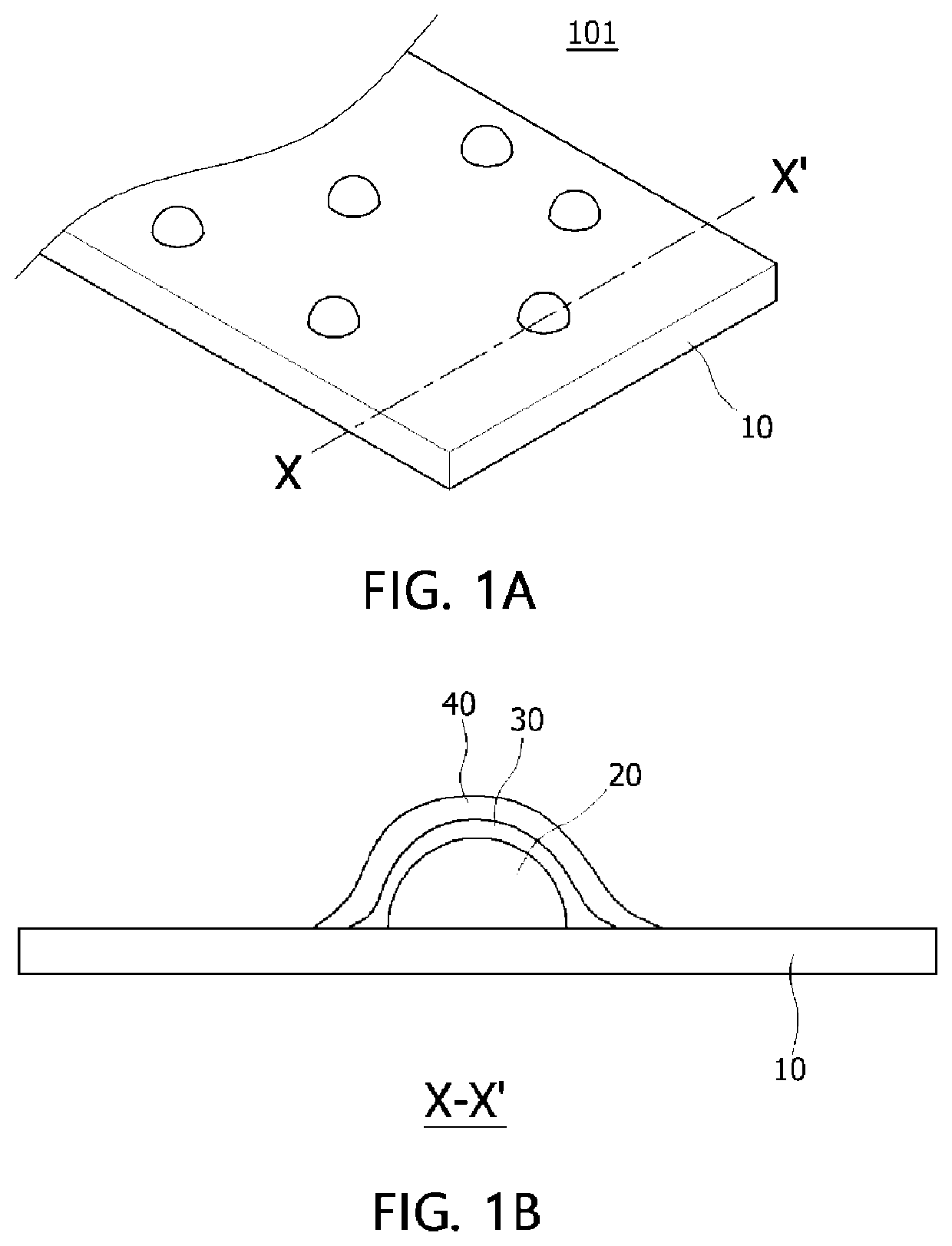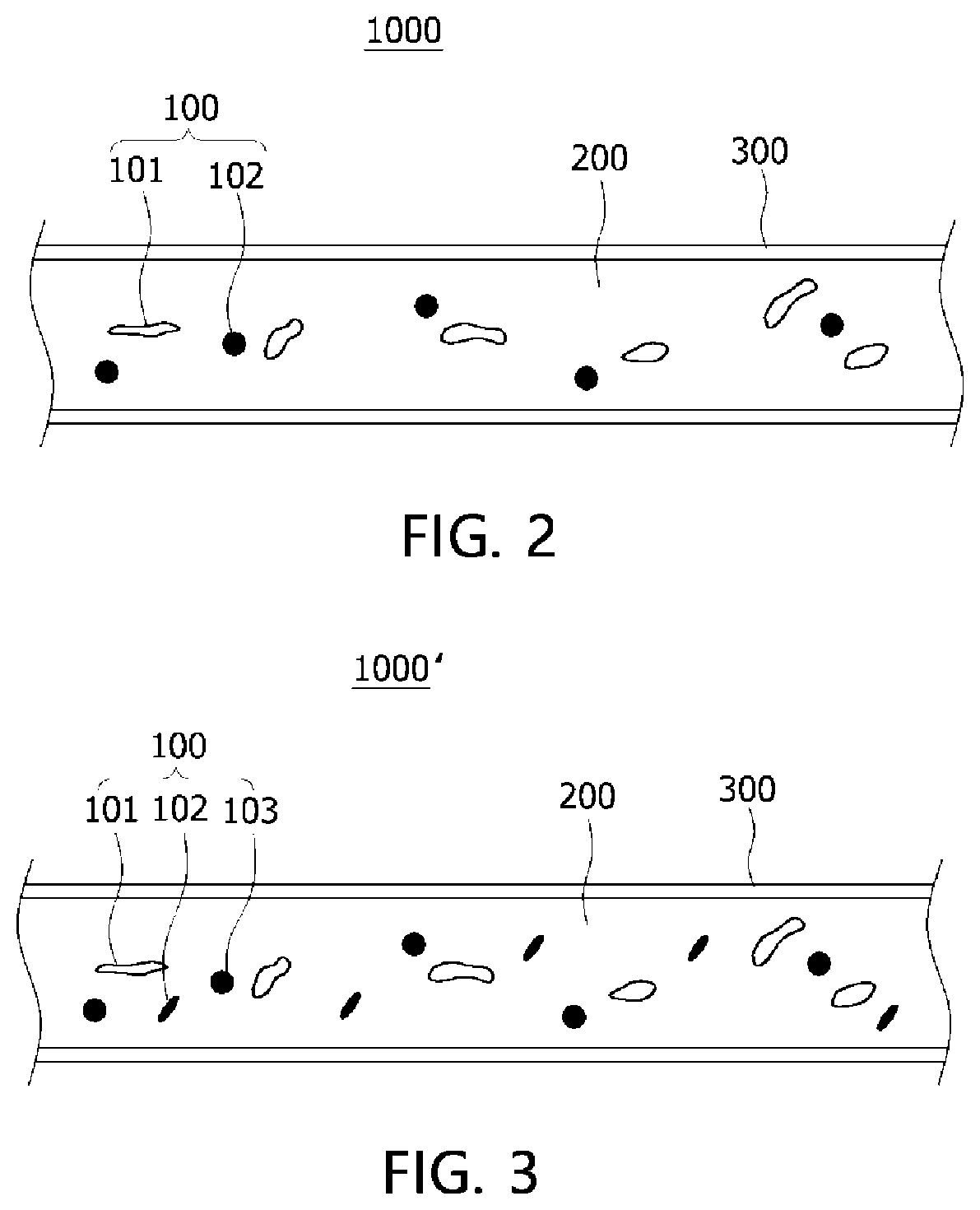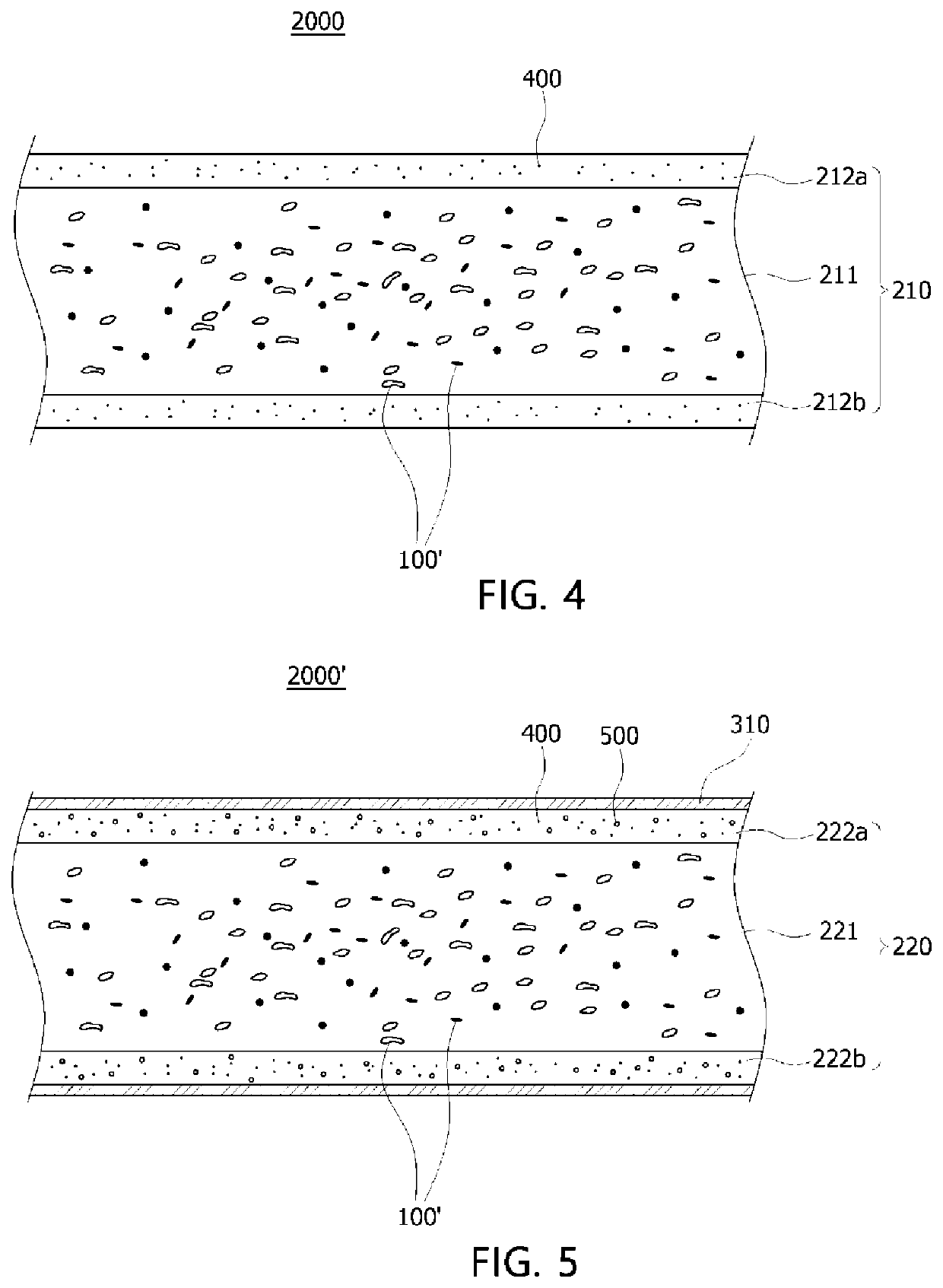Graphite composition, masterbatch comprising same, and graphite composite material embodied thereby
a graphite and masterbatch technology, applied in the field of graphite composition, can solve the problems of reducing operating efficiency, limiting working life, and high production cost of metal parts, and achieves uniform heat dissipation performance, prevent mechanical strength from deteriorating, and high dispersibility.
- Summary
- Abstract
- Description
- Claims
- Application Information
AI Technical Summary
Benefits of technology
Problems solved by technology
Method used
Image
Examples
example 1
[0167]Raw material powder was prepared by mixing plate-shaped expanded graphite having an average particle size of 300 μm and nickel powder in a mixing ratio of 1:19 (weight ratio) for 10 minutes. In addition, argon gas was injected into a radio-frequency thermal plasma device at 30 lpm and 50 lpm as a central gas and sheath gas, respectively. Subsequently, after high-temperature thermal plasma was generated using a plasma torch power supply with a power of 17 kW, and before injection of the raw material powder, the degree of vacuity of the equipment was maintained at 500 torr, the prepared raw material powder was injected into a radio-frequency thermal plasma reactor through a spray nozzle of a plasma generating electrode unit. Inside the thermal plasma reactor, the graphite was transported without thermal damage by the plasma, and only nickel powder was crystallized to nanoparticles through selective vaporization to be bound with the graphite. The aggregate formed by bonding the g...
examples 2 to 18
[0170]Masterbatches for a graphite composite material were prepared in the same manner as in Example 1, except for using various graphite compositions as shown in Tables 1 to 3 below. Here, in Tables 1 to 3, graphite flakes were represented as “GF” and had an average particle size of 75 μm, and spherical graphite was represented as “RG” and had an average particle size of 40 μm.
experimental example
[0173]An injection-molded product was prepared by inputting each of the masterbatches prepared in Examples 1 to 18 and Comparative Examples 1 to 2 into a conventional injection molding device, and the following physical properties were evaluated, and the result is shown in Tables 1 to 3. Here, the size and shape of each injection-molded specimen were determined to be suitable for the methods of evaluating a physical property as follows.
[0174]1. Horizontal Thermal Conductivity
[0175]The horizontal thermal conductivity of a specimen was measured according to ASTM E1461.
[0176]2. Tensile Strength
[0177]The tensile strength of a specimen was measured according to ASTM D638.
[0178]3. Impact Strength
[0179]Impact strength was measured according to ASTM D256.
[0180]
TABLE 1ExampleExampleExampleExampleExampleExampleExample1234567GraphiteGC:Graphite1:9 1:14.7 1:17 1:24.5 1:261:3 1:1.2compositionweight ratioGraphite typeEGEGEGEGEGEGEGand mixingweight ratioGraphitePA-6:Graphite1:11:11:11:11:11:11:...
PUM
| Property | Measurement | Unit |
|---|---|---|
| particle size | aaaaa | aaaaa |
| particle size | aaaaa | aaaaa |
| particle size | aaaaa | aaaaa |
Abstract
Description
Claims
Application Information
 Login to View More
Login to View More - R&D
- Intellectual Property
- Life Sciences
- Materials
- Tech Scout
- Unparalleled Data Quality
- Higher Quality Content
- 60% Fewer Hallucinations
Browse by: Latest US Patents, China's latest patents, Technical Efficacy Thesaurus, Application Domain, Technology Topic, Popular Technical Reports.
© 2025 PatSnap. All rights reserved.Legal|Privacy policy|Modern Slavery Act Transparency Statement|Sitemap|About US| Contact US: help@patsnap.com



